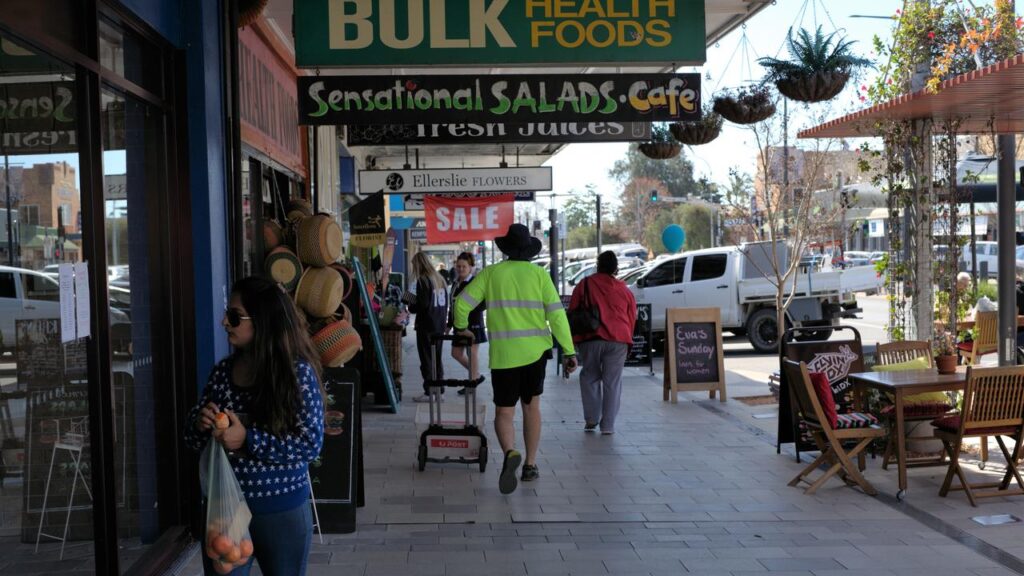Tax cuts set to save Australian homeowners $75k
Written by admin on June 24, 2024
Homebuyers are set to reap the rewards from the Stage 3 tax cuts with the opportunity to pay off their loan faster and in some cases save over $150,0000 over the lifetime of the debt.
While the average tax cut will be $1888 per year, the value of those tax cuts to your mortgage could be much more if you firebomb the debt with the tax cut every single year.
Homeowners who put their entire Stage 3 tax cut savings on their mortgage could shave two to six years off the life of their loan, saving thousands, according to the Aussie home loans research.
For example, those earning $70,000 and who put their full monthly savings of $1429 on their loan could reduce repayments by two to three years and pocket up to $75,530 in interest payments over the entirety of the debt.
For someone on double that wage – $140,000 – savings climb to as much as $171,000 and borrowers could unchain themself from their bank six years early.
An estimated 13.6 million Australians are set to keep more of what they earn from July 1 under the changes with workers’ weekly, monthly or fortnightly pay set to improve.
How the Stage 3 tax cuts could shave years off the average home loan
Mortgage aggregator and broker network Aussie recently crunched the numbers on how the tax cuts will help relieve cost of living pressures.
For example, a single Australian with no dependants earning $120,000 per year in FY24, who could borrow a maximum $615,135.18, will increase their borrowing capacity in FY25 by $27,061.93 on a mortgage based on a 6.28 per cent interest rate to $642,197.44.
But for a married couple with a dual income with two dependants earning a combined taxable income of $280,000 it will increase their borrowing capacity by $75,345.89 on a mortgage with a 6.28 per cent interest rate in FY25.
Aussie’s chief operating officer Sebastian Watkins said the tax cuts could make a significant difference.
“Through our extensive broker network, we have been receiving feedback that many potential purchasers are just coming short of the desired amount they need to purchase their dream home especially as the price of property increases quicker than their ability to save or their wages to grow.
“These borrowers evidently have two choices; look elsewhere for something cheaper and most likely less desirable to them or continue trying to save as much as they can while hoping their incomes grow at a higher rate than property prices.
“These tax cuts will mean there is a cohort of purchasers, who come July 1, will increase their borrowing capacity as their net income will grow and they will have more optionality when seeking finance for a home.
“Even if the tax cuts don’t automatically bump you up enough in terms of borrowing capacity, the additional income can be funnelled straight into extra savings for your deposit,” he said.
“Ultimately the healthier your deposit the less you need to borrow, so this is really a win-win situation for those ready to enter the market.”
How the Stage 3 tax cuts could help mortgage prisoners
The tax cuts will also provide relief for those moving from fixed rate loans to variable loans.
While most have already transitioned onto higher rates, a significant mortgage cliff still looms for nearly one in three of borrowers.
“More options will become available should they now be able to evidence a better income position, though again this won’t be seen until two or three months into the new financial year,” said Ben Magnus, head of Empower Wealth Mortgage Advisory.
Mortgage arrears have been rising
In a sign families are under pressure, mortgage arrears have been rising from their Covid lows of just 1.0 per cent in the third quarter of 2022, reaching 1.6 per cent in the March quarter of 2024.
Although this was the highest reading on mortgage arrears since Q1 2021, the portion of loans falling behind on their repayment schedules was slightly higher at the onset of Covid at 1.8 per cent.
A key factor in higher mortgage arrears is of course the sharp rise in the cost of debt.
With the average variable interest rate on outstanding owner occupier home loans rising from 2.86 per cent in April 2022 to 6.39 per cent in March 2024, a borrower with $750,000 of debt would be paying nearly $1600 more each month on their scheduled repayments.
But there are other factors at play as well. Cost of living pressures are consuming a larger portion of household income, households are paying more tax than ever before and household savings are being drawn down, eroding the savings buffer accrued through the pandemic. There is also the fact that households are more sensitive to sharp adjustments in interest rates, given historically high levels of debt, most of which is housing debt. Loosening labour market conditions would also be playing a role.
Although each measure of mortgage arrears has risen to be above the series average, which is relatively short at only five years, despite the headwinds outlined above, most borrowers have kept on track with their home loan repayments.
They have done this by drawing down on their savings, working more hours or multiple jobs, and contributing less to mortgage offsets or redrawn facilities.
It’s likely mortgage arrears will rise further as unemployment lifts, household savings deplete further and, more broadly, economic conditions navigate a period of weakness.
More Coverage
However, arrears are unlikely to experience a material ‘blow out’ unless labour markets weaken substantially more than forecast.
For homeowners that do fall behind on their repayments, there is a good chance most will be able to sell their asset and clear their debt.
The latest estimates on negative equity from the RBA estimate only around 1 per cent of residential dwellings across Australia would have a debt level that is higher than the value of the home. With housing values continuing to rise, the risk of negative equity is reducing.







